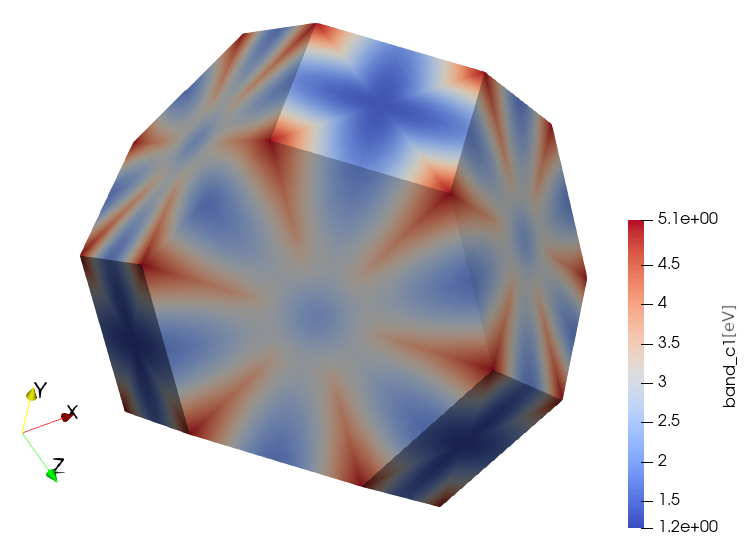 |
|
||||
BiographyMarkus Kampl was born in Vienna, Austria, in 1988. He studied electrical engineering at the TU Wien, where he joined the Institute for Microelectronics in October 2012. He received the degree of Diplomingenieur and the PhD in November 2015, respectively April 2019. Currently, Markus is a Postdoctoral researcher in the CDL for Single-Defect Spectroscopy and his work focuses on developing a simulation framework to calculate the carrier mobility in power MOSFETs. |
|||||
Carrier Mobility Estimation for a Variety of Materials with Monte Carlo and DFT
Monte Carlo (MC) is a widely used method to statistically estimate integrals and solve integral equations. In semiconductor physics, the method is often used to estimate the solution of the Boltzmann transport equation (BTE) [1] [2]. The BTE combines the motion of the carrier for direct and reciprocal lattice, as well as scattering processes between charge carriers and the host material. In this semi-classic approach, the carriers are treated as particles, and the classical particle dynamics are derived from the material's band structure. The scattering is derived from Fermi's Golden Rule. Many effects, such as lattice vibrations, impurities, and high-energy particles, create a scattering potential and, therefore, cause the carrier state's perturbation [3]. In our approach, we create a Monte Carlo simulation framework, which can interact with first-principle simulations to extract some information needed for the transport simulations.
A very common approximation for Monte Carlo simulations is to approximate the band-structure local minima by (non-)parabolic analytical expressions. This approximation works well for materials like silicon, where the local minima are separated, and the simulation focuses on carriers with low energy. Suppose one is interested in carriers with higher energies or materials with band structures, where the local minima are very close. In that case, the full-band structure of this material is needed. We have implemented a framework where the band structure can be read directly from a Density Functional Theory (DFT) simulation to enable this approach. Now, the idea is to extract more information from a DFT simulation to estimate carrier mobility.
A very dominant scattering process for calculating carrier mobility is phonon scattering. There, particles are scattered by lattice vibrations propagating in the crystal. A common way of modeling this process is to look only at very dominant phonon-particle couplings from one local minimum in the band structure to another. These models are called effective mass models. The phonon-particle coupling is, of course, different in every material. The parameters of one model are usually adjusted to the experimental data.
Our aim right now with the Monte Carlo framework is that, with the help of a colleague working with DFT, we can import the band structure as well as a phonon-carrier scattering model out of a DFT simulation. This would enable a Monte Carlo-based carrier mobility estimation on a huge variety of different materials.
[1] C. Jungemann et al., Springer, 2003.
[2] C. Jacoboni et al., Springer, 1989.
[3] M. Lundstrom, Cambridge University Press, 2000.

Fig. 1: The figure shows the first conduction band of the first Brillouin zone in silicon. This full-band structure was calculated with DFT and is used in MC simulations.


